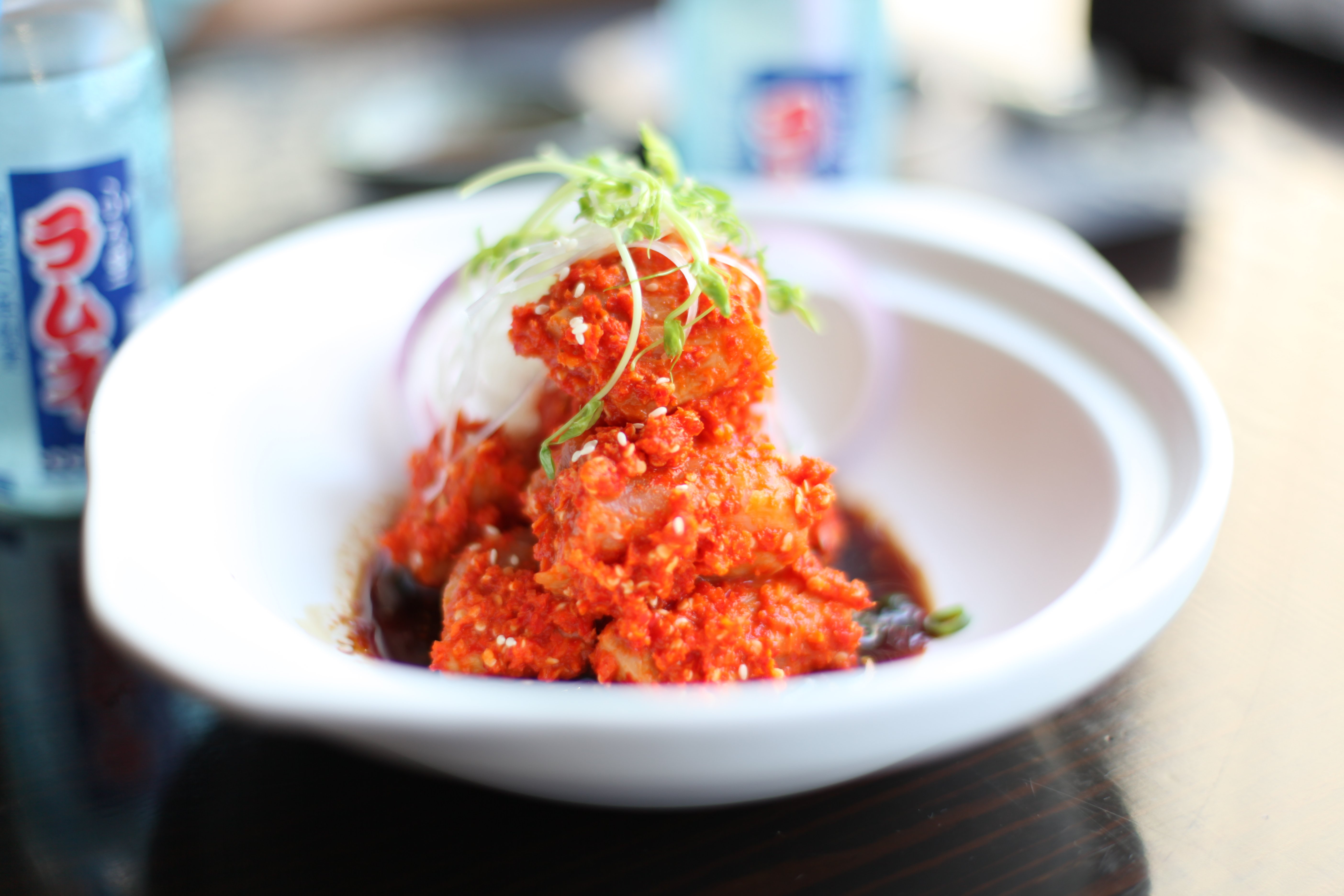

Today i'm taking us Steemians to a well known restaurant in Xi'an. This restaurant is known for it's creative Japanese fusion cuisine. Forbes recently published an article ranking cuisines of the world based on their health benefits. Japanese food ranked no.1. Their food has little oil, salt and is predominantly raw without condiments. This has led to a staggeringly low percentage of people overweight in Japan (1.5%), as well as longer life expectancy (82 years). Chinese people generally avoid eating raw food. They believe that eating too much raw food can lead to food poisoning or other illnesses, however it is still very refreshing in moderation, particularly during the warmer summer months.
今天带着Steemit走进了一家在西安的人气餐厅,它是融合了日本特色的创意料理。《福布斯》刊文称,在世界饮食健康榜上,日本料理排名第一, 料理中主导的少油少盐的生食使得日本肥胖率仅为1.5%,预期寿命达到82 岁。虽然中国人更习惯吃熟食,有很多人因为害怕生病不敢生吃海鲜,但是夏天偶尔吃一顿凉爽清新的料理,也是非常解暑的。
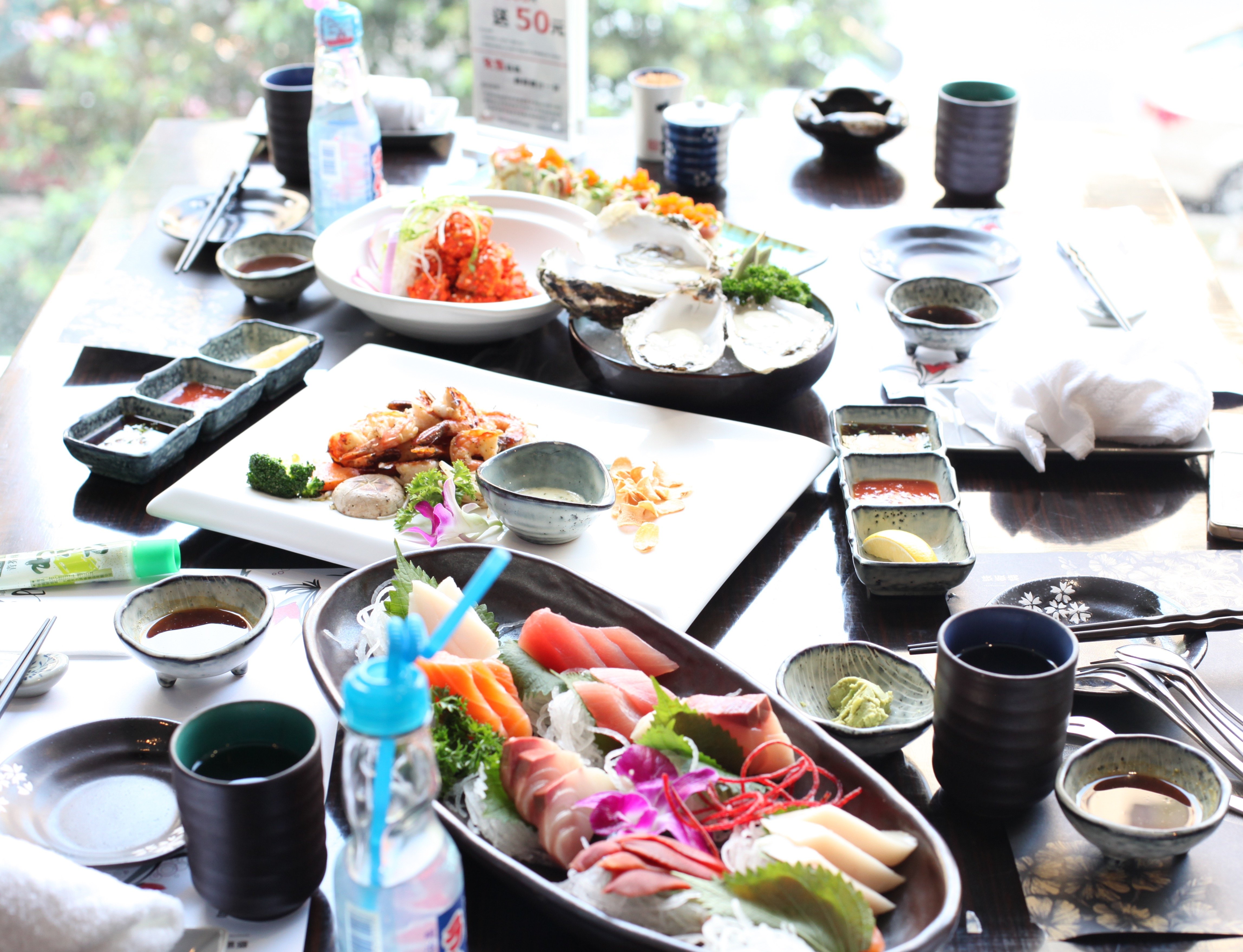
Speaking of creativity, the first dish we had was Spicy Salmon Sashimi. The sauce was a specially prepared chilli sauce topped off with a bit of sesame sprinkled on top. This was a nice appetiser which also showed this restaurants ability to integrate the local Chinese tastes.
说起创意第一道不得不提到辣三文鱼,这是我第一次尝试辣味的三文鱼,新鲜三文鱼撒上餐厅特制的辣酱和香香的芝麻,料理结合了中国人的口味,变得有滋有味。

The presentation of the Sushi here is very detailed and delicate. The meat is raw and fresh, and the ingredients are all organic. Sushi is perfect for maintaining a good figure. The essence of sushi is the simple combination of plain rice, simple dressing and natural overall taste.
漂亮造型的寿司,做工复杂,并且超低的热量、无火的生食方式、有机的食材、新鲜的味道,寿司满足了人们一切想象也给了女孩子在夏天保持身材的机会。寿司米饭拌的味道也刚刚好 ,以简单为美味,以自然为美味,这大概是特色料理的精髓。
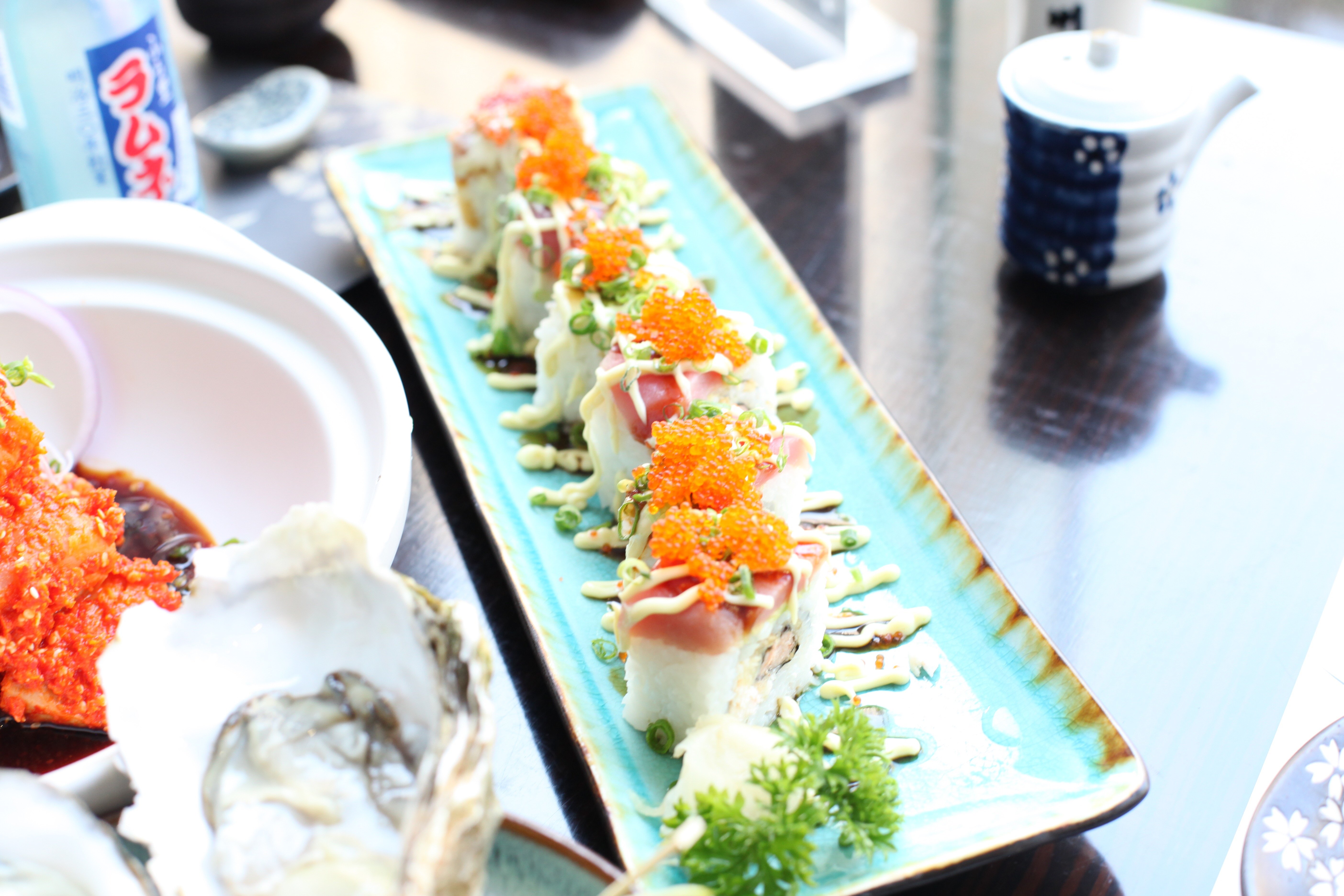
Here we have a Sushi platter. Each slice is nice and thick whilst the texture of the meat remains soft. The freshness makes me think the fish were slaughtered only moments before serving the dish.
红白金枪鱼切的都很厚片,还有颜色亮丽的三文鱼、北极贝等等鲜嫩的拼盘刺身,口感很棒,很香很嫩 。
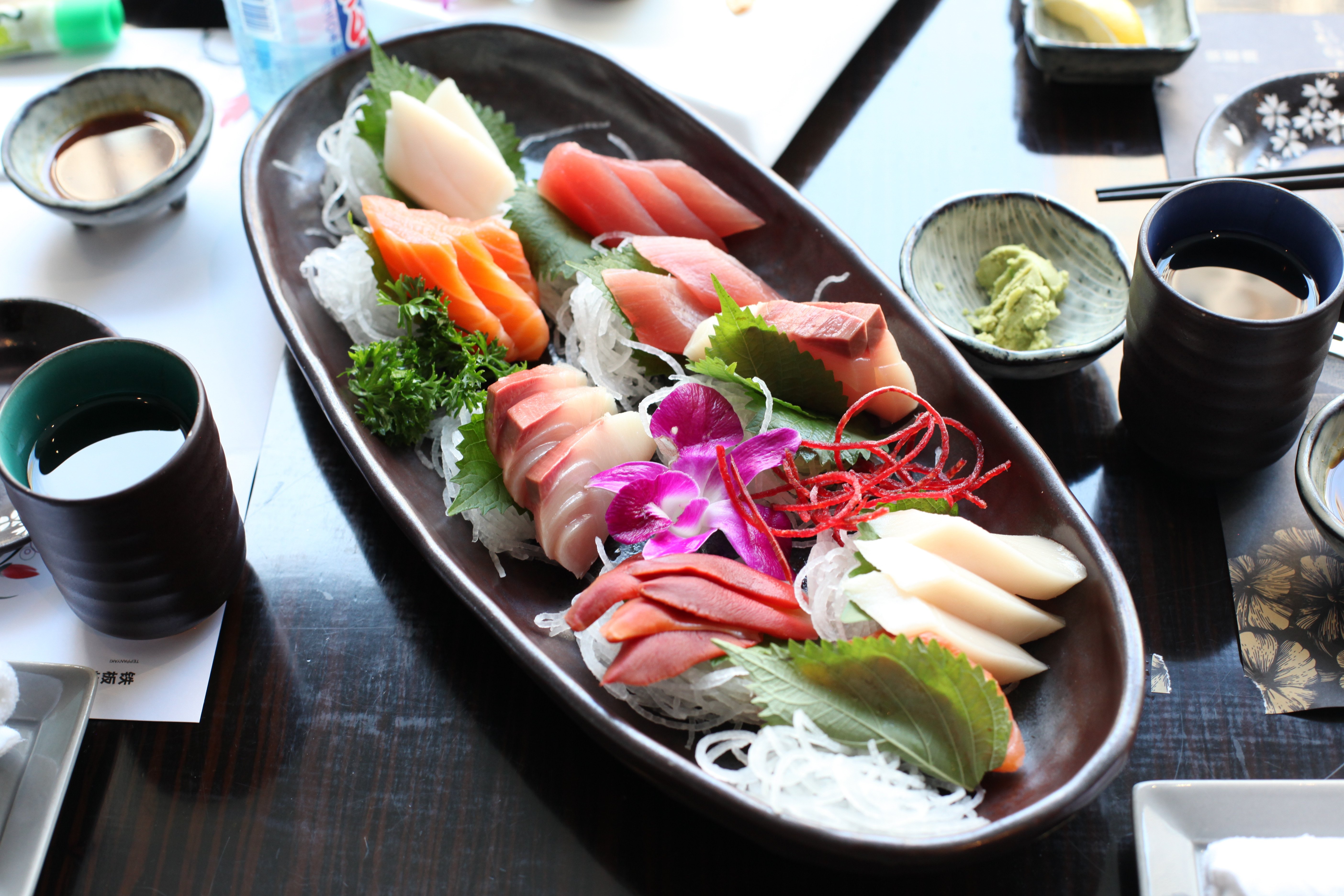
Teppanyaki Squid, the sauce was very well rooted as the taste was thorough throughout. The texture of this squid is slightly different to the Sashimi fish, instead of being soft, it's quite tough and chewy.
铁板鱿鱼, 酱汁略带甜口,鱿鱼超级新鲜、入口Q弹的感觉。
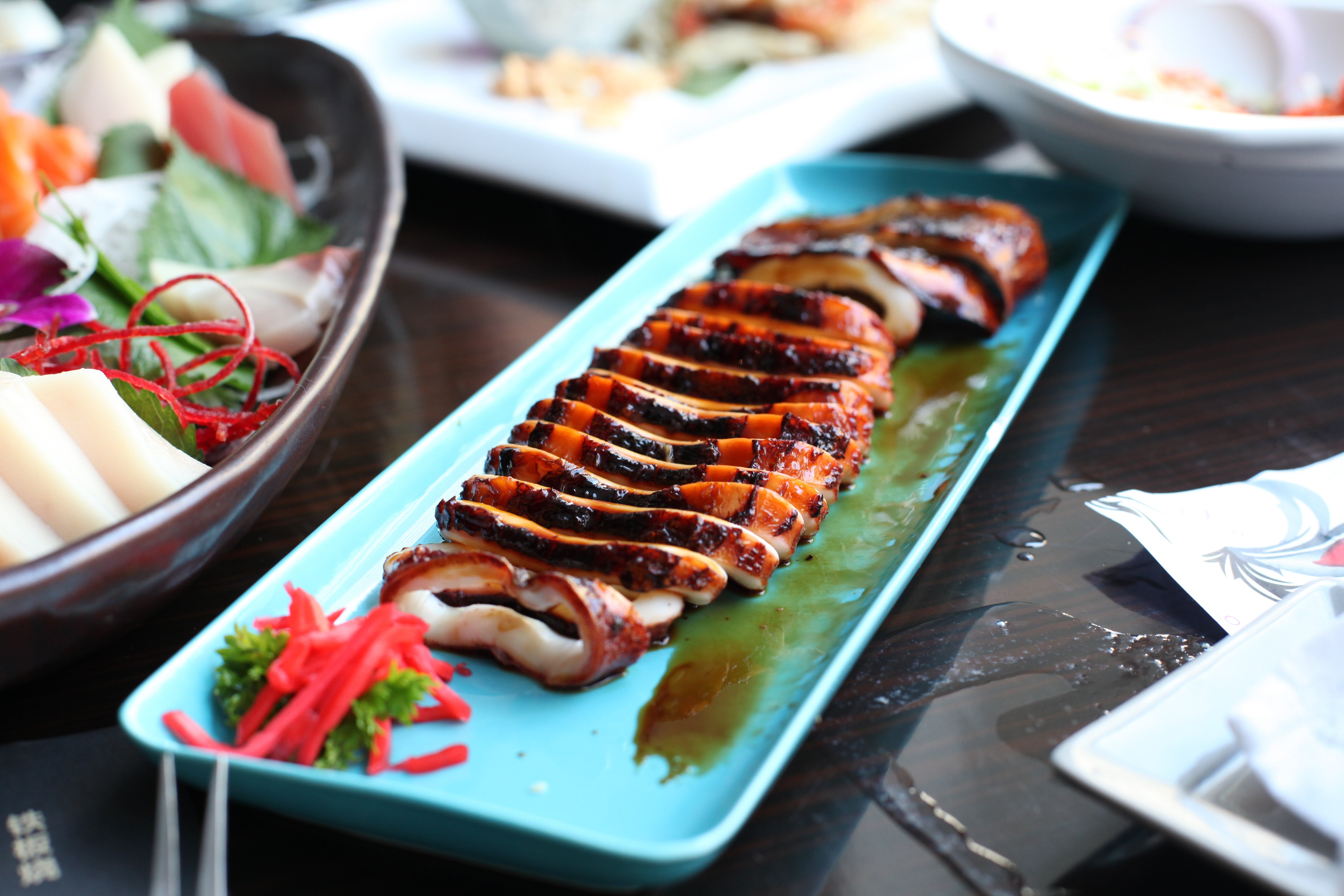
Another fusion dish here, this time combining foie gras with roasted eel. It is served atop of a slice of roasted bread and kiwi which help to make the foie gras milder tasting. Very creative and absolutely delicious!
创意最为经验的是法式鳗鱼配鹅肝,鹅肝入口极化,用料足,口感好,其中配有奇异果可以除腻。

Teppanyaki Prawns, the intestinal trail has been removed and the dish is served with Thousand Island sauce made in-house. Deep fried garlic slices are provided on the side to garnish. Each prawn can be eaten with one slice of deep fried garlic to help decorate the taste.
铁板虾, 虾线被处理掉了,配千岛蘸酱的铁板料理,一旁的炸蒜片用来点缀口味,一个蒜片配一个虾,味道香极了。
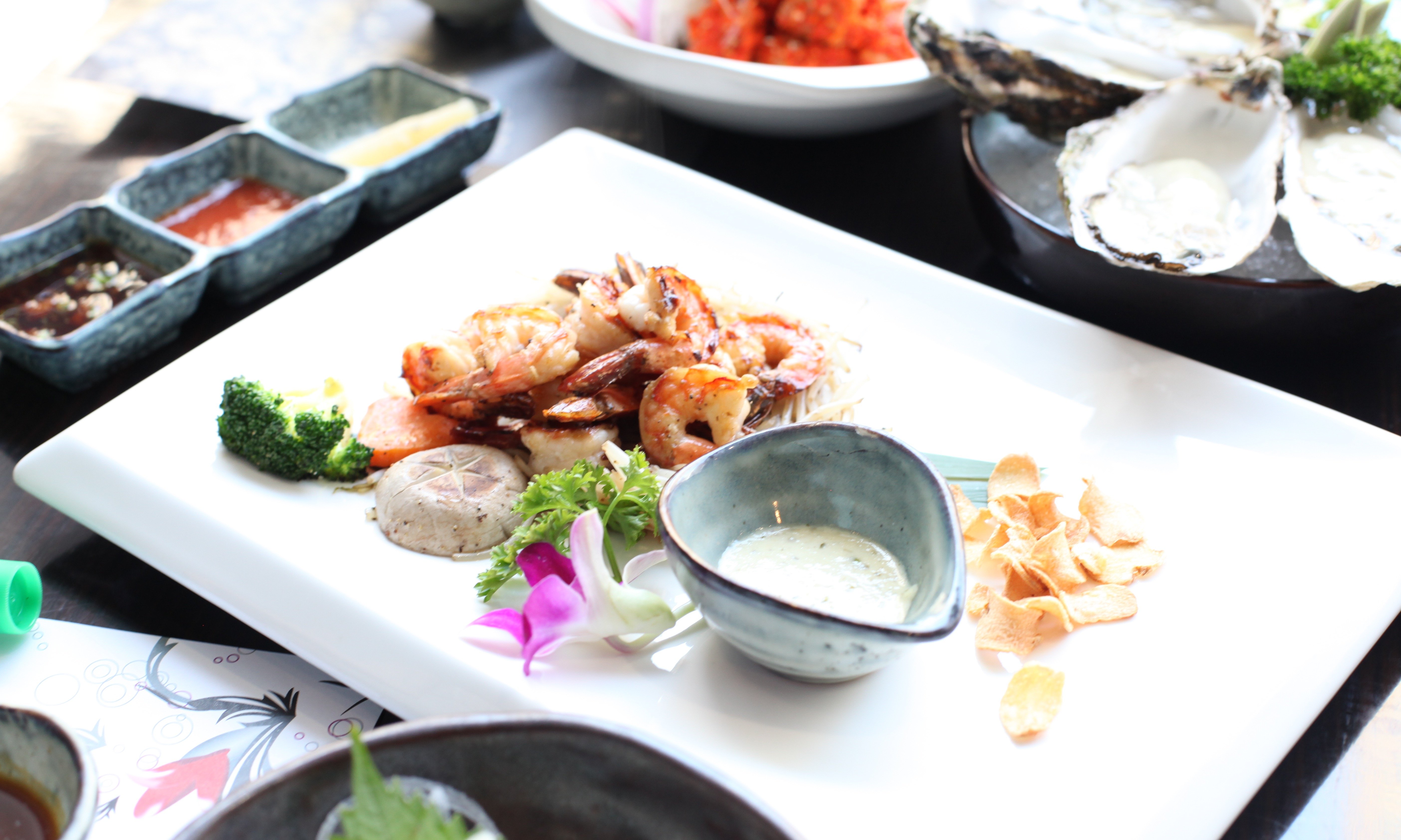
This restaurant also serves Fresh Oysters that are air delivered each morning from various parts of the world. The Oysters we had, pictured below are the New Zealand Golden Oysters. They are large in size but still very soft in texture.
这家餐厅提供世界各地的当天空运到达的生蚝,照片上是新鲜的新西兰黄金生蚝,个头非常大且口感滑嫩。
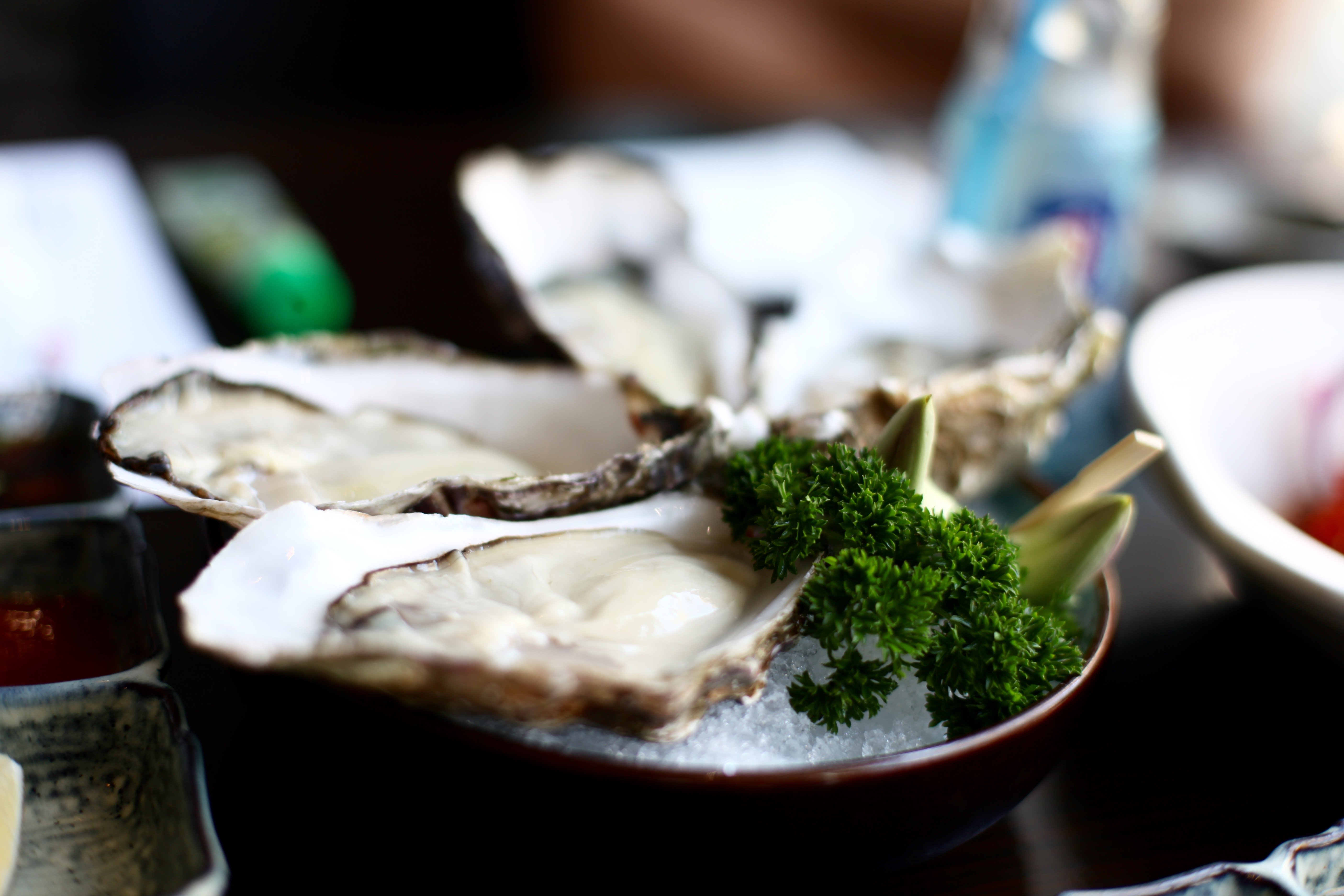
After sharing pictures of Japanese food, it's hard to ignore the detail this restaurant has put into the presentation. In fact, since ancient times in Japan, the people there have pursued the perfect balance of both taste as well as the art of plating. This could be attributed to the early introduction of Chinese culture into Japan. For example, through influence of the Tang Dynasty (618-690AD, 705-907AD), the Japanese began the pursuit of perfecting the art of plating. From uncovering ancient Japanese cook books, we have discovered that the people of the time attached more importance to the presentation of food instead of the taste. After the Edo period (1603-1868) requirements of the Shogun demanded that the chefs are able to cook a large variety of dishes. This allowed the chefs to develop advanced culinary skills resulting in the improvement and thus balance of taste and presentation. It is at this time that the Confucian teachings came into favour and a culture of pursuing harmony was born. Since then, the balance of taste and presentation has never disappeared.
分享完料理的照片,不难发现这家餐厅食物的摆盘也是一大亮点,其实在日本自古就非常追求料理的“味道”与“摆盘”的平衡,这与日本在古代引入中国文化也有着莫大关系。例如,受唐朝(618-690年、705-907年)文化的影响,日本开始追求深入细节的“完美”。从出土于日本的古代料理书籍中看出历史上的厨师比起“味道”来,更重视追求内外协调的“摆盘”。之后的江户时代(1603–1868年),因为幕府要求厨师提供多种多样的菜式,而使得厨师们才逐渐形成卓绝的技巧。受到中国儒家文化而生的“追求和谐”(味道与摆盘的平衡)的概念就一直流传至今。
A Yin and Yang porridge and hot pot.

太极图元素的中国美食

